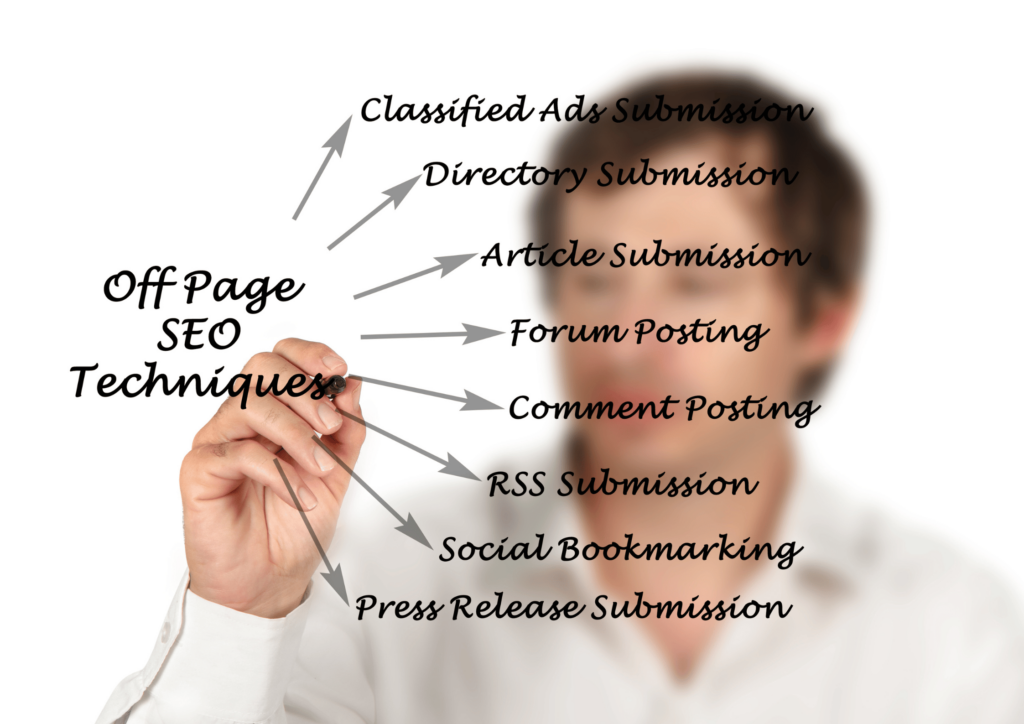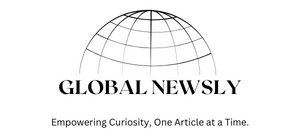Is your website’s visibility faltering in search results?
Engines like Google scrutinize websites, determining which deserves the coveted top rankings through complex algorithms.
Understanding and implementing on page SEO—strategic optimizations within your site’s content and structure—is vital for digital success.
Mastering SEO transforms obscurity into prominence.
What is An On Page SEO?
On-page SEO is the practice of optimizing individual web pages to improve their organic search rankings and drive more relevant traffic to a website. It involves various techniques and strategies that focus on optimizing the content, HTML source code, and overall structure of a webpage.
One of the key components of on-page SEO is optimizing the content on a webpage. This includes conducting keyword research to identify relevant and high-performing keywords and then incorporating those keywords strategically throughout the content. It’s important to ensure that the keywords are used naturally and not stuffed into the content excessively.
In addition to keyword optimization, on-page SEO also involves optimizing the HTML source code of a webpage. This includes optimizing the title tags, meta descriptions, and header tags to make them more search-engine-friendly. Properly formatted URLs and the use of schema markup can also improve the visibility and understandability of a webpage by search engines.
The structure and organization of a webpage are equally important for on-page SEO. This includes using descriptive and relevant headings to break up the content, utilizing internal links to connect related pages, and optimizing images with appropriate alt tags. A well-structured webpage not only helps search engines understand the content better but also improves the user experience.
Additionally, on-page SEO takes into account factors such as page loading speed, mobile-friendliness, and user engagement metrics. Fast-loading webpages that are mobile-responsive and provide a seamless browsing experience tend to rank higher in search engine results.
Overall, on-page SEO is crucial for improving the visibility, accessibility, and relevance of a webpage in search engine results. By implementing effective on-page SEO techniques, websites can increase their chances of ranking higher and attracting more organic traffic.

What are The Differences Between On Site SEO and Off Site SEO?
On site SEO and off-site SEO are two important aspects of search engine optimization. On site SEO refers to the optimization techniques and strategies implemented directly on your website, while off-site SEO involves activities that take place outside of your website but still impact its search engine rankings.
On Site SEO:
On site SEO focuses on improving several aspects of your website to increase its exposure and relevance to search engines. This includes ensuring that your website’s content is relevant, well-structured, and keyword-rich.
It also involves optimizing HTML tags such as meta titles, meta descriptions, and headers, as well as improving website loading speed and making it mobile-friendly.
Off-Site SEO:
Off-site SEO concentrates on improving your website’s reputation, authority, and popularity through external factors. This is largely accomplished by building high-quality backlinks from reputable websites to your own.
Backlinks are a vote of confidence from other websites, showing that your material is useful and credible. Engaging in social media marketing, guest blogging, and influencer outreach are some common off-site SEO techniques.

Key Differences:
The main difference between on site and off-site SEO lies in the areas they focus on. On site SEO works to optimize your website’s internal elements and content, while off-site SEO is concerned with enhancing your website’s reputation and authority through external factors like backlinks.
On site SEO is crucial for ensuring that search engines understand your website’s content and relevance. It helps search engines assess the value of your website and rank it accordingly in search results.
Off-site SEO, on the other hand, helps search engines evaluate the popularity and trustworthiness of your website. The more high-quality backlinks your site has, the higher its perceived authority, which can positively influence its search engine rankings.
In summary, on site SEO is about optimizing your website’s internal elements to make it more search engine friendly, while off-site SEO focuses on building your website’s reputation and authority through external factors. A successful SEO strategy requires a combination of both on site and off-site optimization techniques to enhance your website’s visibility and improve its search engine rankings.
What are Some Best On Page SEO Techniques?
Best on page SEO techniques are strategies that can be implemented directly on your website to improve its visibility and search engine ranking. These techniques optimize various elements of your web pages to make them more search engine-friendly. Here are some of the most effective on page SEO methods:
- Keyword optimization: Conduct extensive keyword research to uncover relevant keywords for your article. Include these keywords in strategic locations such as the page title, headings, meta tags, URLs, and within the content itself. However, avoid excessive keyword stuffing, as this can negatively impact the user experience.
- High-quality content: Create distinctive, insightful, and interesting material that is valuable to your audience. Use your target keywords naturally throughout the content to improve relevancy. Make sure that the content is well-structured, with suitable headers, subheadings, and paragraphs.
- Meta tags optimization: Make sure your meta tags, particularly the meta title and meta description, appropriately represent the content of your web pages. These tags appear in the search engine results pages (SERPs) and can influence the click-through rate (CTR) of your website.
- URL structure: Ensure that your URLs are descriptive and concise, and include relevant keywords where applicable. A clean and organized URL structure helps search engines understand the context of your web pages.
- Header tags: Use header tags (H1, H2, H3, etc.) to create a logical hierarchy of your content. Include your target keywords in the headings to provide search engines with additional signals about the topic of your page.
- Image optimization: Optimize the images by giving them meaningful filenames and alt tags that incorporate important keywords. Compress the image files to improve page speed without compromising image quality.
- Internal linking: Create internal links within your website to connect related content. This helps search engines learn about your website’s structure and facilitates user navigation. Use keyword-rich anchor text for internal links.
- Mobile optimization: Make sure your website is mobile-friendly, as mobile responsiveness is a major element in search engine results. Optimize your pages for mobile devices by using responsive design, fast-loading images, and readable fonts.
- Page speed optimization: Optimize code, compress pictures, reduce CSS and JavaScript files, and use caching techniques to speed up your website’s loading time. Faster-loading pages improve the user experience and are recommended by search engines.
- Schema markup: Use schema markup to give search engines with more context for your content. This can enhance the display of your web pages in search results, leading to higher visibility and click-through rates.
How to Optimize Meta Tags?
Meta tags are an important part of website optimization for search engines. By strategically optimizing your meta tags, you can improve your website’s visibility and attract more targeted traffic.
- Title Tag Optimization:
The title tag is among the most important meta elements. It should accurately describe the content of your web page and incorporate relevant keywords. Keep it concise, typically around 50-60 characters, to ensure it appears fully in search engine results.
- Meta Description Optimization:
The meta description gives an overview of the webpage’s contents. It should be convincing, informative, and contain relevant keywords. Aim for a length of around 150-160 characters to ensure it is fully displayed in search results.

- Keyword Optimization:
Incorporating relevant keywords into your meta tags is vital for search engine optimization. Research and select appropriate keywords that relate to your content and target audience. Avoid keyword stuffing and ensure they naturally flow within the meta tags.
- Unique Meta Tags for Each Page:
To optimize each web page, create unique meta tags for each page on your website. This allows search engines to understand the unique content and purpose of each page. Avoid using duplicate meta tags, as they can confuse search engines and negatively impact your rankings.
- Use Schema Markup:
Implementing schema markup in your meta tags can help search engines understand and display relevant information about your website in search results. This can help improve the visibility and click-through rates of your web pages.
When to Use Internal Links?
Internal links are used to connect different web pages within the same website. They are a powerful tool for improving website navigation and user experience.
You should use internal links in the following situations:
- To improve website structure: Internal links help create a hierarchical structure of web pages. They allow users to easily navigate from one page to another, providing a smooth browsing experience.
- To enhance SEO: Internal links assist search engine crawlers in discovering and indexing your web pages. By linking relevant pages together, you can indicate the relative importance and relationship of different content on your website. This can boost your website’s visibility in search engine rankings.
- To promote user engagement: Internal links can encourage users to explore more of your website by directing them to related or similar content. This can increase the time users spend on your site, reduce bounce rates, and improve overall user engagement.
- To highlight important pages: Use internal links to draw attention to key pages that you want to prioritize. By linking from high-traffic or authoritative pages, you can guide users towards important information or conversion points.
- To update content: When you update or modify existing content, internal links enable you to direct users to the latest or most relevant information. This ensures that users always have access to the most up-to-date content on your website.
Remember to use descriptive anchor text for your internal links. This helps users understand where the link will take them and can also provide context to search engines.
Additionally, avoid excessive internal linking because it can lead to a cluttered user experience. Strive for a balance between providing helpful links and maintaining a clean and visually appealing website design.
Crafting SEO-Friendly URLs
When structuring URLs, clarity and brevity are paramount. Concisely crafted URLs that reflect the content’s theme not only bolster user experience but also enhance search engine comprehension.
These web addresses should be devoid of unnecessary parameters, instead presenting a clean, logical path that intuitively guides both users and algorithms.
To create an SEO-optimized URL, employ descriptive, keyword-rich phrases that succinctly capture the page’s essence. Avoid excessively long or cryptic strings that could confound search engines and visitors.
Remember that a well-constructed URL is like a signpost on the Internet highway, directing traffic and signaling to search engines the destination’s relevance and content hierarchy.

Short, Descriptive Links
URLs serve as the navigation beacons of the web, guiding both users and search engines to your content. Short, descriptive links can significantly boost SEO performance, providing a clear and concise pathway to your pages.
A URL structured with relevant keywords not only aids in user understanding but speaks volumes to search engines about the content within. Keep URLs logically crafted and tightly aligned with your page’s message to leverage the dual benefits of user clarity and search engine visibility.
Descriptive URLs with targeted keywords improve click-through rates and SEO rankings.

Crafting URLs that are succinct yet informative requires a thoughtful balance between brevity and description.
By eliminating superfluous characters and focusing on keywords that mirror your page content, you create an inviting link that users are more likely to click on and search engines more readily understand. This practice is instrumental in streamlining site navigation and bolstering online discoverability.
Including Target Keywords
Target keywords are essential in enhancing your website’s visibility.
For maximum efficacy, strategic placement of keywords is a paramount practice within on page SEO. Ensure that they appear in the title tag, headings, first paragraph, and throughout the body of content. Their judicious distribution must not, however, compromise the natural flow of the text. High keyword density is no longer advantageous, and keyword stuffing can incur punitive actions from search engines, leading to a decline in rankings.
Additionally, these keywords should be part of your meta descriptions and alt attributes for images. When search engines crawl your webpage, the incorporation of target keywords in these elements helps to establish a more defined topical relevance. This deeper level of optimization contributes to a stronger connection between search queries and your content.
In conclusion, when integrating target keywords, it’s imperative to balance density with contextuality. Segue keywords into your content seamlessly, without sacrificing readability for the sake of optimization.
Remember that quality content that resonates with your audience will naturally incorporate the necessary terms. Effective utilization of target keywords can result in elevated organic search rankings, ultimately enhancing the visibility and accessibility of your online presence.
Optimizing Title Tags
The title tag is the frontline ambassador for your webpage, its purpose is to succinctly convey topic relevance while engaging the user. These title elements are paramount in search engine results, where they not only inform the searcher what the page is about but also play a critical role in persuading them to click through to your content.
A well-crafted title tag is a delicate blend of brand, relevance, and succinctness, crafted to resonate with both search engines and potential visitors alike.

To master this element of on page SEO, prioritize clarity and ensure that each title tag uniquely represents the content of its respective page. A title tag should incorporate your primary keyword in a manner that feels organic and contextually sound, avoiding the overuse that can lead to penalties for keyword stuffing.
Equally, the title must remain compelling; it should ignite curiosity or present a clear benefit, prompting users to explore further. The optimal length for a title tag hovers around 50-60 characters, long enough to be descriptive yet concise enough to avoid being truncated in search results.
Unique Titles for Each Page
Crafting unique titles for each page is not merely an SEO best practice; it’s a fundamental necessity. Without distinctive titles, pages blend into the digital abyss, failing to capture the targeted attention they deserve.
Every page must stand out with its title. Uniformity leads to confusion and missed opportunities.
Envision each page as an individual chapter in a book—its title must encapsulate the essence of the content, beckoning readers from the table of contents. A title should be a beacon, clearly signaling the page’s topic in a sea of countless competitors, grasping the user’s interest, and holding it.
When titles are unique, they not only differentiate pages but also enhance the site’s navigability and user experience. Precise, distinct titles allow users to easily bookmark and return to specific content, and for search engines, they act as clear indicators of page subject matter.
This specificity is key to establishing a structured hierarchy and thematic grouping within your site, promoting a more streamlined and intuitive navigation experience.
Integrating Primary Keywords
Effective on page SEO starts with the strategic placement of your primary keywords throughout your content.
- Title Tags: Position your primary keyword prominently within the page title.
- Headers: Utilize your primary keyword in H1 and occasionally in H2 tags for structuring content.
- First Paragraph: Introduce the primary keyword naturally in the opening lines of your text.
- Meta Descriptions: Embed the primary keyword to enhance click-through rates from search results.
- URLs: Include the primary keyword in a clean, simplified URL structure.
- Alt Text for Images: Incorporate the keyword in the alt text of relevant images for better indexing.

Your primary keyword should be contextually relevant to your page’s topic and content.
Impeccable placement contributes to a coherent narrative and optimizes visibility in search engine results.
Leveraging Meta Descriptions
Meta descriptions serve as concise summaries that articulate the essence of your web page’s content, directly influencing click-through rates from search engine results pages (SERPs). View them as persuasive snippets: they must encapsulate relevancy and value to prompt clicks from potential visitors.
To maximize their impact, ensure meta descriptions are compelling, incorporate targeted keywords fluidly, and adhere to the character limit—typically up to 160 characters—to avoid truncation. Crafting these with precision can differentiate your listing and drive higher engagement, signaling to search engines that your page is a valuable resource, thereby improving your overall website ranking.
Concise, Actionable Summaries
Craft meta descriptions that entice users and inform search algorithms about your page’s focus. Utilize these summaries to reinforce your targeted keyword’s relevance, making each snippet as engaging as possible.
Today, poignant brevity is king. Effective meta descriptions distill your content’s core value proposition within a succinct 160-character limit, meshing persuasive language with strategic keyword integration.
Reflecting your webpage’s content succinctly in the meta description enhances user clarity and search engine correspondence. This summary should be a distilled essence, potent enough to catalyze user interest and search queries alike.
Given their weight in SERP real estate, meta descriptions must align with user intent, harness actionable language, and remain within the optimization parameters of modern search engine guidelines, ensuring they fully render in search results.
Strategize with intent and creativity; optimized meta descriptions can dramatically bolster your website’s visibility and click-through rate. Employ precision in your summaries to capture attention and drive meaningful traffic.

Utilizing Secondary Keywords
Secondary keywords are essential for contextualizing and diversifying your content’s relevance in search engines.
- Synonymous variations enrich your content’s semantic field.
- Long-tail keywords target more specific queries and attract quality traffic.
- LSI keywords (Latent Semantic Indexing) provide search engines with deeper context.
- Related phrases support the primary keyword and increase topical authority.
- Question-based keywords address direct user inquiries and improve engagement.
Incorporating these variations naturally within your content signals the depth and comprehensiveness of the information provided.
Broaden your SEO scope by integrating these supporting keywords. This not only caters to a wider audience but also strengthens your page’s subject expertise signals.
Structuring Content with Headings
Effective content organization is paramount in on page SEO. Proper use of headings, including H1 for titles, and H2 through H6 for subheadings, structures content hierarchically, guiding search engines and users alike through the narrative. Each heading should encapsulate the essence of the content that follows, acting as signposts that lead visitors through your webpage’s thematic journey.
Headings should not be overlooked as they carry significant weight in search engine algorithms. They inform crawlers of the content’s framework, improving indexability. Additionally, strategic keyword placement in headings can bolster topical relevance, elevating your website’s authority and ranking potential in search engine results pages (SERPs).
Proper Use of H1 Tags
The H1 tag is a pivotal element for on page SEO that serves as the primary headline or title of a page.
- Single Use: Implement a single H1 tag per page to define its main topic.
- Relevancy: Ensure the H1 tag contains keywords relevant to the page’s content.
- Conciseness: Keep the H1 tag concise while encapsulating the essence of the page.
- Prominence: Place the H1 tag prominently at the top of the content for visibility.
- Hierarchy: Use H1 tags to establish content hierarchy, followed by the appropriate use of H2-H6 tags for subheadings. Employing an H1 tag correctly can significantly impact your content’s readability and SEO performance.
Tags like H1 not only organize content but also communicate with search engine algorithms, reinforcing the subject matter of the page.
Hierarchy and Keyword Distribution
Establishing a clear hierarchy with keyword-rich headings can enhance a website’s structure and SEO efficiency. Prioritize keywords within these headings to guide users and search engines, reinforcing the page’s main topic.
Use descending tags—from H1 to H6—for organized structure and keyword dissemination. This hierarchical approach helps search engines understand content relevance.
Incorporating relevant keywords strategically across headings (H1 through H6) ensures your content’s thematic consistency. It also aids in the differentiation of main points and subtopics, enhancing the content’s navigability and search engine crawlers’ comprehension.
A meticulous strategy for keyword distribution across your heading hierarchy can lead to improved SERP rankings. This involves placing primary keywords within the H1 tag, while secondary and tertiary keywords should be spread throughout the H2-H6 tags.
Such a structured approach not only benefits search rankings but also provides a coherent framework for users, which can increase page engagement and time on site.




